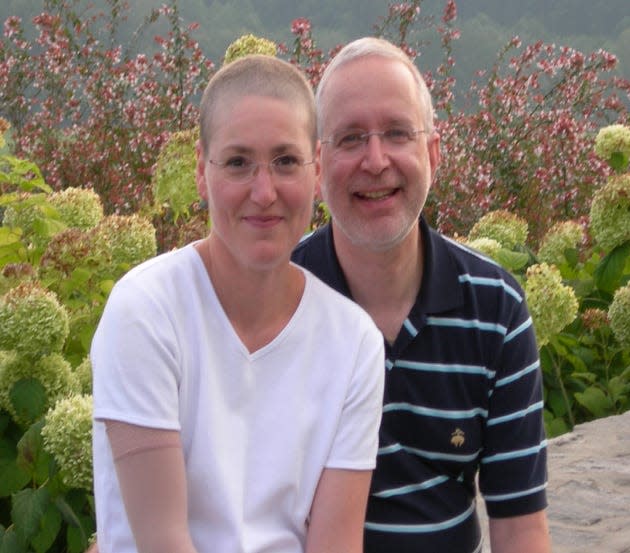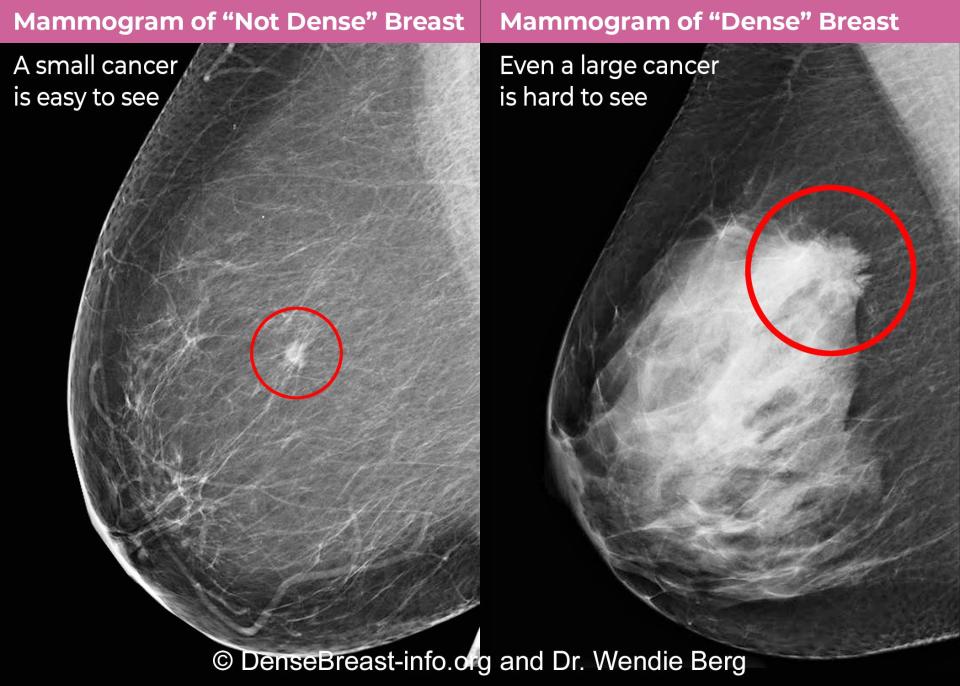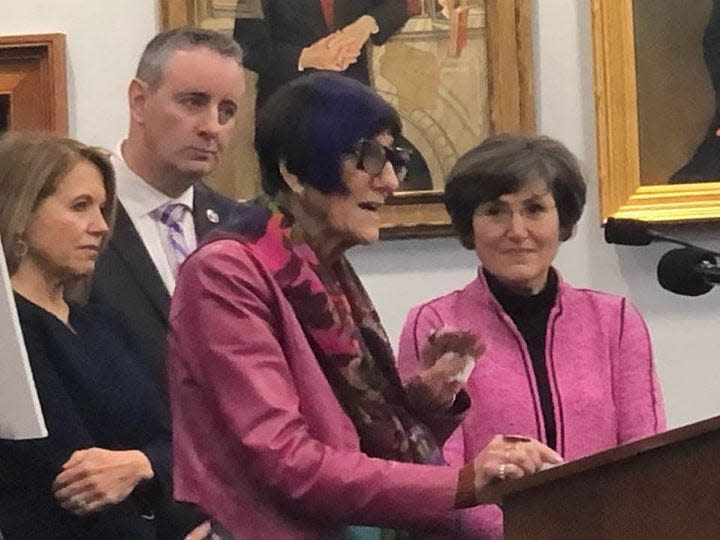A woman's breast cancer was missed on multiple mammograms. She had higher breast density, which can hide tumors.

JoAnn Pushkin was vigilant about getting breast cancer screening and performing self-exams.
She was diagnosed late because she had "dense breasts," making cancer invisible on her mammograms.
Pushkin became an advocate for raising awareness around breast density.
JoAnn Pushkin did everything she could to spot breast cancer early. She started getting annual mammograms at 40, the recommended age to begin screening. She also followed a healthy diet, regularly exercised, and performed additional self-exams, despite only having one aunt with breast cancer and no other risk factors.
But at 45, she felt a lump. She was shortly diagnosed with later-stage breast cancer.
Pushkin was shocked — another mammogram still showed no signs of a tumor. A technician explained that Pushkin had dense breasts, which makes tumors harder to spot on mammograms.
Pushkin was floored, especially when she learned that around 40% of women have dense breasts.
"I go on for the ultrasound and there it is, clear as a bell," Pushkin, now 64, told Business Insider. "So on the same day I learned I had breast cancer, I learned I had dense breasts, and I learned it had been missed because I had dense breasts."
Her late diagnosis meant Pushkin needed a double mastectomy, seven surgeries, and eight rounds of chemotherapy. Five years later, the cancer came back and she needed 30 rounds of radiation.
Even large tumors are hard to spot in some mammograms

"Dense" breasts have more glands and fibrous tissue, which makes them appear different on mammograms. Because dense tissue and cancer both appear white on mammograms, the cancer can blend right in, going completely unnoticed until the cancer advances, as it did in Pushkin's case.
Additionally, having dense breasts also increases your risk of developing breast cancer, though the CDC said scientists are still unsure why.
At first, Pushkin thought she had a rare condition. "I get home and find out 40% of women have dense breasts," she said. She quickly learned that other screening methods, like ultrasounds or MRIs, would have found her cancer much earlier.
Pushkin, now the executive director of the educational resource DenseBreast-info, is still shocked and furious that she was never informed she had dense breasts in the five years she got annual screenings. "I felt betrayed," she said.
These days, she has to be even more vigilant, testing more often and dealing with the side effects of so many treatments. "What could have been an early stage diagnosis with maybe a lumpectomy and back to work the next day wound up being very long drawn out," she said.
This year, new federal regulations to protect women with dense breasts

Infuriated by how preventable her later-stage cancer diagnosis was, Pushkin set out to raise awareness about breast density.
She started in New York state, where she resides, helping to pass a law that requires doctors to flag high breast density after a mammogram.
In the years since, she has chipped away at regulations nationwide, testifying before the FDA and writing to lawmakers. This year, on September 10, 2024, it will become a federal regulation for healthcare practitioners to inform patients with dense breasts of their cancer risks.
While the new federal requirement is a huge victory, Pushkin can't help but think of the advocates who are no longer around to rejoice with her.
"Some of them were fighting for these laws literally while sitting in chemo chairs, getting infusions while they're fighting for these laws," she said. "When you think about the fact that these 39 state laws were fought for by sick women, it is quite something that these women and their families have paid the price for this," she said.
How to assess your own risk
Women who are at high risk for breast cancer (regardless of breast density) should have a yearly MRI in addition to a mammogram.
You can also talk to your doctor about additional screening methods like MRIs or ultrasounds.
"It's not a one-size-fits-all," Pushkin said. But for women with dense breasts, an annual mammogram should be the first step in getting screened — and probably not be the last.
Read the original article on Business Insider

